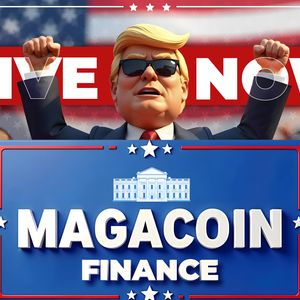In a world rapidly being reshaped by digital innovation, the concept of tokenization is emerging as a powerful force, particularly within the complex realm of financial markets . Adding significant weight to this perspective, U.S. SEC Commissioner Hester Peirce recently voiced her strong belief in tokenization’s potential to fundamentally alter how financial assets are structured, traded, and managed. Her comments, highlighted by Watcher Guru on X, underscore a growing recognition at high levels of regulatory authority regarding the transformative capabilities of blockchain technology and tokenization. What Exactly is Tokenization ? Before diving into Commissioner Peirce’s insights and the broader implications for financial markets , let’s clarify what tokenization actually means. In simple terms, tokenization is the process of converting a real-world or digital asset into a digital token on a blockchain technology platform. Think of it like creating a digital certificate of ownership or value that can be easily stored, transferred, and managed on a distributed ledger. Representation: A token represents a fractional or whole ownership stake in an underlying asset. Underlying Assets: These can be diverse, ranging from real estate, art, and commodities to traditional securities like stocks and bonds, or even intangible assets like intellectual property. Blockchain Foundation: The tokens exist on a blockchain, leveraging its inherent characteristics like transparency, immutability, and security. Why Does Hester Peirce ‘s View Matter? Commissioner Hester Peirce is a prominent figure within the U.S. Securities and Exchange Commission ( SEC ), the primary regulator of securities markets in the United States. Often dubbed ‘Crypto Mom’ by the digital asset community, Peirce is known for her thoughtful, and often dissenting, views on how the SEC approaches cryptocurrency and blockchain technology . Unlike some of her colleagues, she has consistently advocated for clearer regulatory frameworks that foster innovation rather than stifle it. Her endorsement of tokenization as a key to evolving financial markets carries significant weight because: It signals that regulatory bodies are actively considering the implications of this technology. It comes from a Commissioner who understands and is generally supportive of technological advancements in finance. Her perspective can influence internal discussions and potentially future regulatory approaches within the SEC regarding tokenized assets. The Revolutionary Potential: How Tokenization Can Reshape Financial Markets Commissioner Peirce’s optimism stems from the numerous potential benefits that tokenization brings to the table. These advantages could fundamentally change the structure and operation of traditional financial markets , making them more efficient, accessible, and dynamic. Here are some key areas where tokenization is poised to make a significant impact: Increased Efficiency and Reduced Costs Traditional financial systems often involve multiple intermediaries, complex processes, and significant overheads. Tokenization , built on blockchain technology , can streamline these processes. Settlement times can be reduced from days to minutes or seconds, and the need for numerous intermediaries can be minimized, leading to lower transaction fees and operational costs for issuing, trading, and managing assets. Enhanced Liquidity Many assets, such as real estate, fine art, or private equity, are traditionally illiquid. Selling these assets can be a lengthy and cumbersome process. Tokenization allows these assets to be fractionalized into smaller, more affordable tokens. This fractionalization makes it easier for a wider range of investors to buy and sell smaller portions, thereby increasing the overall liquidity of the asset. Greater Accessibility and Financial Inclusion By lowering the minimum investment threshold through fractionalization, tokenization opens up investment opportunities in high-value assets to a much broader base of investors globally. This can lead to greater financial inclusion, allowing individuals who previously couldn’t afford a whole property or a share in a large artwork to participate in these markets. Increased Transparency and Security Transactions involving tokens are recorded on a public or permissioned blockchain ledger. This provides a high degree of transparency, as the history of ownership and transactions is immutable and verifiable. The cryptographic security inherent in blockchain technology also reduces the risk of fraud and errors compared to manual record-keeping systems. Streamlined Corporate Actions and Management Managing corporate actions like dividend payments, voting rights, or stock splits can be complex in traditional systems. Tokenized securities can potentially automate these processes using smart contracts, programmable agreements that automatically execute when predefined conditions are met, increasing efficiency and accuracy. Exploring Real-World Examples of Tokenization The concept of tokenization isn’t just theoretical; it’s already being implemented across various sectors. While the regulatory landscape, particularly from bodies like the SEC , is still evolving, pioneers are demonstrating the practical applications. Asset Class How Tokenization is Applied Potential Impact Real Estate Representing property ownership (or fractional ownership) as digital tokens. Increased liquidity, lower transaction costs, global investment access, fractional ownership opportunities. Fine Art & Collectibles Issuing tokens that represent a share in a valuable painting, sculpture, or collectible. Democratization of art investment, increased liquidity for high-value assets, new funding models for artists/galleries. Stocks & Bonds Creating digital tokens that represent traditional securities. Faster settlement, 24/7 trading potential, reduced counterparty risk, automated corporate actions via smart contracts. Funds (Private Equity, Venture Capital) Tokenizing stakes in traditionally illiquid investment funds. Improved transferability of fund interests, potential for secondary markets, lower investment minimums. These examples illustrate the tangible ways tokenization , powered by blockchain technology , is starting to penetrate and innovate within established financial markets . What Are the Hurdles and Challenges for Tokenization Adoption? While the potential is immense, the path to widespread adoption of tokenization in financial markets is not without its obstacles. Commissioner Peirce is well aware of these challenges, many of which fall under the purview of the SEC and other regulators. Regulatory Uncertainty: This is perhaps the biggest hurdle. How will tokenized securities be classified and regulated by bodies like the SEC ? Different jurisdictions have different approaches, creating a complex global landscape. Clear guidelines are needed for issuance, trading platforms, custody, and investor protection. Security Risks: While blockchain is secure, the platforms and smart contracts built on it can be vulnerable to hacks or bugs if not properly audited and secured. Private key management also poses risks for individual token holders. Interoperability: Different tokenization platforms and blockchains may not easily interact with each other or with existing legacy financial infrastructure. Achieving seamless interoperability is crucial for a truly integrated market. Scalability: Some blockchain networks may face challenges in handling the massive volume of transactions required for global financial markets. Legal Frameworks: Existing legal frameworks often need to be adapted to clearly define ownership rights, transferability, and enforcement mechanisms for tokenized assets. Market Acceptance and Education: Widespread adoption requires trust from institutional players and education for retail investors about how tokenized assets work and the associated risks. The Foundational Role of Blockchain Technology At the heart of tokenization lies blockchain technology . It provides the distributed ledger infrastructure that makes tokenization possible. The key features of blockchain that are critical for tokenized assets include: Decentralization: Data is not stored in a single location, reducing single points of failure. Immutability: Once recorded, transactions are extremely difficult to alter, ensuring data integrity. Transparency: Depending on the type of blockchain, transactions can be viewed by participants, increasing accountability. Smart Contracts: Automated agreements that execute predefined actions based on coded rules, enabling features like automated dividend payments or rights distribution. Understanding the capabilities and limitations of the underlying blockchain technology is essential for evaluating the potential and risks of tokenized financial markets . Navigating Regulation: Insights from the SEC Perspective Commissioner Peirce’s comments are particularly relevant in the ongoing global conversation about regulating digital assets. The SEC has been active in pursuing enforcement actions against what it deems unregistered securities offerings involving tokens. However, Peirce has often argued for a more nuanced approach, suggesting safe harbors or clearer guidance to allow legitimate innovation to flourish without compromising investor protection. Her highlighting of tokenization as a positive evolutionary force suggests that at least some within the SEC are looking beyond just enforcement and are considering how this technology could be integrated into regulated financial markets in a beneficial way. This perspective is crucial for fostering constructive dialogue between innovators and regulators. Actionable Insights: What Does This Mean for You? Commissioner Peirce’s statement and the rise of tokenization have implications for various participants in the financial ecosystem: For Investors: Keep an eye on platforms offering tokenized assets. Understand the underlying asset, the platform’s regulatory compliance (especially with the SEC where applicable), and the specific rights conferred by the token. Tokenization could offer new diversification and liquidity opportunities. For Financial Institutions: Explore how tokenization can enhance existing services (e.g., faster settlement, new product offerings) or create new business models. Engage with regulators like the SEC to understand the evolving landscape. For Developers and Entrepreneurs: There is a significant opportunity to build the infrastructure, platforms, and applications needed for tokenized financial markets . Focus on security, interoperability, and compliance. For Policymakers and Regulators: Continue engaging with industry participants to develop clear, proportionate, and forward-looking regulations that protect investors while allowing innovation to thrive. Commissioner Peirce’s approach offers one perspective on balancing these goals. Conclusion: A Glimpse into the Future of Finance Commissioner Hester Peirce ‘s recent remarks serve as a powerful affirmation of tokenization ‘s potential to revolutionize financial markets . By leveraging blockchain technology , tokenization promises increased efficiency, enhanced liquidity, greater accessibility, and improved transparency. While significant challenges remain, particularly concerning regulatory clarity from bodies like the SEC , the momentum behind tokenization is undeniable. As this technology matures and regulatory frameworks evolve, we are likely to see tokenized assets become an increasingly integrated part of the global financial landscape, unlocking new opportunities for investors and reshaping the very structure of markets as we know them. Peirce’s optimistic outlook provides a hopeful signal for the future intersection of digital innovation and traditional finance. To learn more about the latest tokenization trends and their impact on financial markets , explore our article on key developments shaping the future of finance and blockchain technology .



















